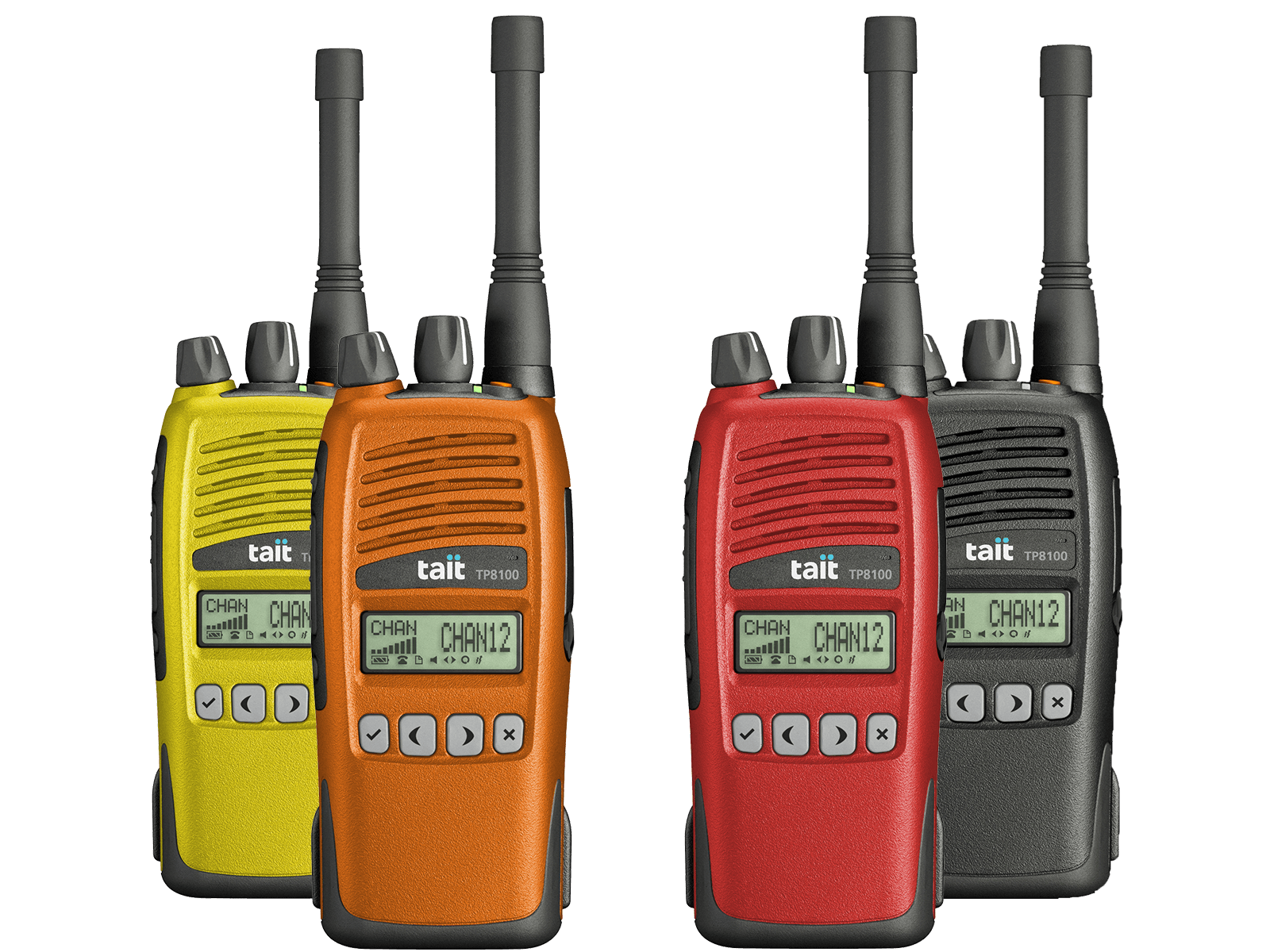TP8100 - ANALOGUE MPT PORTABLES
The TP8100 series of analog, analog simulcast IP, conventional and trunked portables set new standards for build quality and industrial design. Waterproof, dustproof and shockproof beyond IP67 and MIL-STD-810F, all models in the TP8100 series deliver outstanding reliability and durability.
All products come with the same two-shot molded construction, easy-to-use programming software, 1880mAh Li-Ion battery as standard, and on display models 24 character enhanced visibility LCD display.
All products come with the same two-shot molded construction, easy-to-use programming software, 1880mAh Li-Ion battery as standard, and on display models 24 character enhanced visibility LCD display.
KEY FEATURES

- Tough enough to withstand the harshest environments; engineered to exceedIP67 sealing: zero dust ingress and immersible in one metre of waterfor 30 minutes
- Light and easy to carry: only 12 ounces with battery
- Top-mounted, easy-to-find programmable emergency key and Lone Worker capabilityimproves worker safety
- Trunked MPT features include multiple call types: individual/group/PABX/interfleet and short data messages
- Up to 350 conventional channels with CTCSS/DCS, Selcall, Two Tone Decode(Type 99), MDC1200, G-Star (Encode) and voting/scanning
- Ease of programming enables efficient and rapid customization
Why choose Tait MPT?
MPT is the most successful trunked mobile radio technology worldwide, suiting the needs of our global customers due to its flexibility and efficiency benefits. Tait has a long and distinguished track record in developing this technology and offering the MPT-IP (MPT 1327) trunking network with an impressive range of features that include:
- remote network management
- efficient deployment of radio channels
- scalable infrastructure from single site to nationwide
- a wide range of open standard terminal products
- seamless migration paths to digital technology
- individual, group (team) or broadcast (all-informed) calls
- PSTN and PABX telephone access
- MAP27 data interface
- call diversion and forwarding
- priority handling of emergency calls
- status messages
- a short message service for dispatch or job information
- a polling channel providing efficient location updates for large fleets, which can co-exist with voice operation.
RESOURCES
Click the below links to learn more.


